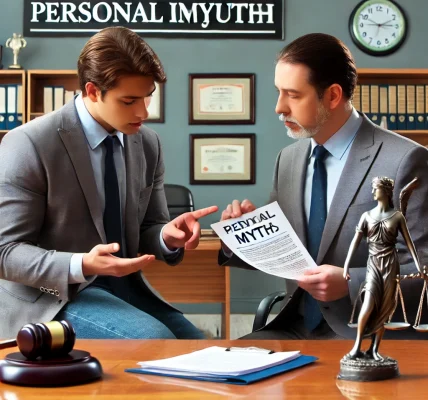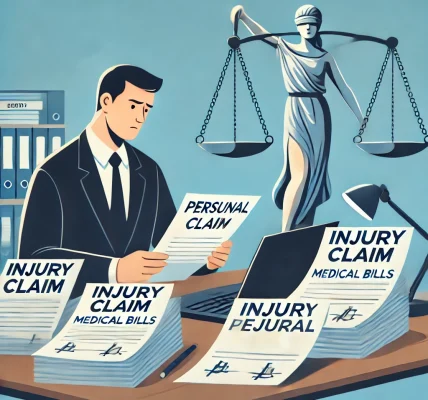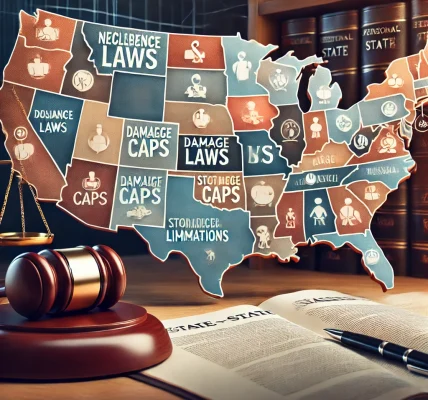Introduction
A personal injury lawsuit can be a complex and time-consuming process. If you’ve been injured due to someone else’s negligence, you may be entitled to compensation. However, understanding the steps involved can help you prepare for what lies ahead and ensure you take the right actions to maximize your claim.
In this guide, we will walk you through each stage of a personal injury lawsuit, from filing a claim to reaching a settlement or going to trial.
1. Initial Consultation with a Personal Injury Attorney
The first step in a personal injury lawsuit is consulting with an experienced attorney. During this meeting, the attorney will:
- Evaluate the details of your case.
- Determine if you have a valid claim.
- Explain your legal rights and possible compensation.
- Discuss the next steps and legal strategy.
Many personal injury attorneys offer free consultations and work on a contingency fee basis, meaning they only get paid if you win your case.
2. Investigation and Gathering Evidence
Once you hire an attorney, they will conduct a thorough investigation to build your case. This involves:
- Collecting medical records and bills.
- Reviewing police reports and accident records.
- Gathering witness statements.
- Consulting with medical experts, accident reconstruction specialists, or other professionals.
- Securing video footage or photographs from the accident scene, if available.
The strength of your evidence plays a crucial role in determining the success of your claim.
3. Filing the Lawsuit (Complaint)
If a settlement cannot be reached with the responsible party’s insurance company, your attorney will file a complaint in civil court. This document:
- Outlines the facts of the case.
- Identifies the parties involved.
- Specifies the damages you are seeking.
After filing, the defendant (the party you are suing) will be served with a summons notifying them of the lawsuit.
4. The Defendant’s Response
After receiving the complaint, the defendant has a set amount of time (usually 20-30 days) to respond. They can:
- Admit fault and negotiate a settlement.
- Deny the allegations and request the case be dismissed.
- File a counterclaim against you.
If the defendant refuses to settle, the case proceeds to the discovery phase.
5. Discovery Process
The discovery phase allows both parties to exchange evidence and gather additional information. This process includes:
- Interrogatories: Written questions each side must answer under oath.
- Depositions: Witness testimonies recorded outside of court but under oath.
- Requests for documents: Medical records, insurance policies, and other relevant materials.
- Expert opinions: Reports from doctors, accident reconstruction specialists, and economists.
Discovery ensures both sides understand the case’s strengths and weaknesses before trial.
6. Pre-Trial Motions and Settlement Negotiations
Before trial, attorneys may file motions to dismiss parts of the case or present evidence to the judge. Many cases are settled at this stage to avoid the time and expense of a trial.
Insurance companies often make settlement offers, but your attorney will negotiate to ensure you receive fair compensation. If a fair settlement is reached, the case ends here.
7. Going to Trial
If no settlement is reached, the case proceeds to trial. A trial includes the following stages:
- Jury Selection: If applicable, a jury is chosen to hear the case.
- Opening Statements: Each side presents an overview of their case.
- Presentation of Evidence: Witnesses testify, and attorneys present evidence.
- Cross-Examination: Each side questions the opposing witnesses.
- Closing Arguments: Attorneys summarize their case and request a favorable verdict.
- Jury Deliberation and Verdict: The jury (or judge in a bench trial) decides on liability and damages.
A trial can last anywhere from a few days to several weeks.
8. Receiving Compensation or Filing an Appeal
If you win your case, the court will determine how much compensation you receive. The defendant may appeal the decision, which can extend the process.
Compensation can include:
- Medical expenses (past and future).
- Lost wages and reduced earning capacity.
- Pain and suffering damages.
- Punitive damages (in cases of extreme negligence).
Conclusion
Understanding the personal injury lawsuit process can help you navigate your case with confidence. While it may take time, having a skilled attorney and strong evidence increases your chances of receiving fair compensation.
If you’ve been injured due to someone else’s negligence, consult a personal injury lawyer to discuss your options. A well-prepared case can make a significant difference in the outcome.
Don’t wait—protect your rights and get the justice you deserve!




